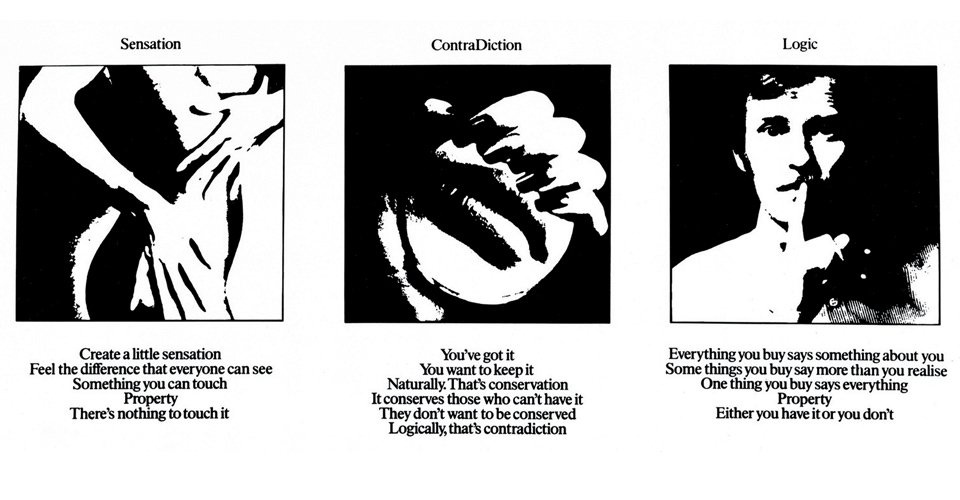Much work around the relation between text and image has been done by photographers – perhaps because our everyday experience of photography is so frequently mediated by the written word, and we are quite accustomed to reading between photographic images and text from existing formats of the media.
A key figure – both a photographer and a prolific writer of photographic theory – who explored the artisti plays between image and text during the 1970s was Victor Burgin.
 |
Victor Burgin, Possession (1976).
|
The poster above was flyposted around the city. It plays on (and appropriates) advertising imagery and asks about questions of 'property' in terms of gender and sex as well as social equality. Of course, today's society is actually far more unequal than the one Burgin described back in 1976. At the time of my writing (Jan 2016) this there was has been within the newspapers in the last week a study which has noted that a mere 62 of the world's richest people own more than the poorest half of the world's population. Burgin's question might come back to us again today: What does possession mean to us
?
 |
| Sensation, 1975 |
Burgin's work of the 70s also looked at questions of gender and at the way that the fashion industry worked.
 |
| Life Demands a Little Give and Take (1974) |
Burgin often played with the appropriation of different modes of writing (in the above, a kind of advertising speak), and their contrast ('montage') with disparate images.


